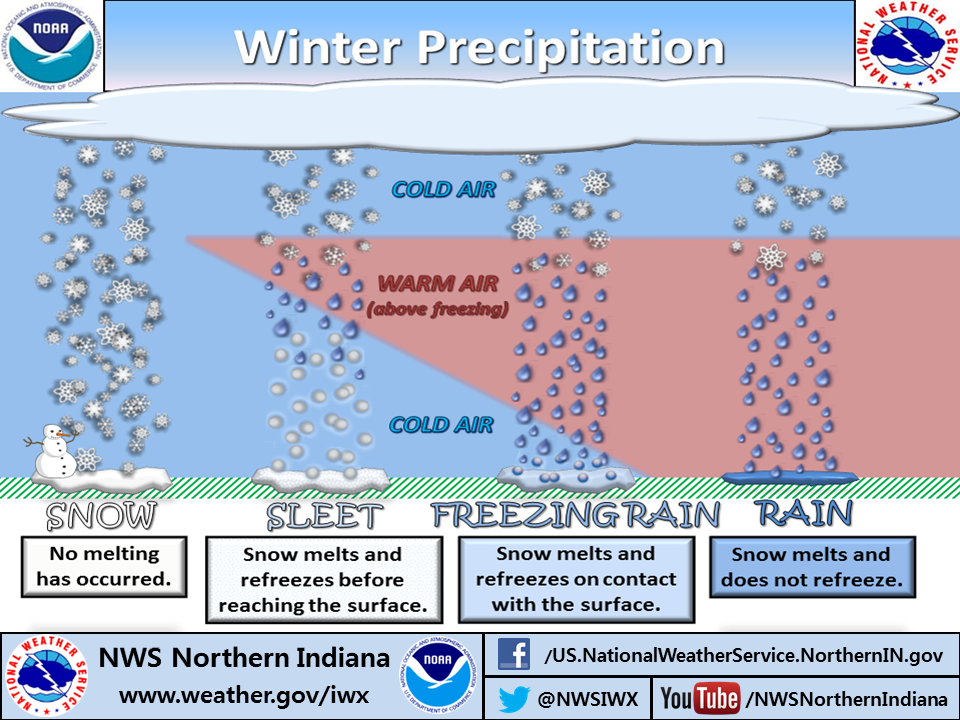Northern Indiana
Weather Forecast Office
We thought it would be helpful to examine the difference between sleet, freezing rain, and snow. The following descriptions are excerpts from NOAA's National Severe Storms Laboratory Severe Weather 101 Primer.
Sleet occurs when snowflakes only partially melt when they fall through a shallow layer of warm air. These slushy drops refreeze as they next fall through a deep layer of freezing air above the surface, and eventually reach the ground as frozen rain drops that bounce on impact. Depending on the intensity and duration, sleet can accumulate on the ground much like snow.
Freezing rain occurs when snowflakes descend into a warmer layer of air and melt completely. When these liquid water drops fall through another thin layer of freezing air just above the surface, they don't have enough time to refreeze before reaching the ground. Because they are “supercooled,” they instantly refreeze upon contact with anything that that is at or below freezing (32 degrees F), creating a glaze of ice on the ground, trees, power lines, or other objects. Even light accumulations can cause dangerous travel, while heavier amounts can cause significant damage to trees and power lines. A significant accumulation of freezing rain lasting several hours or more is called an ice storm.
Snow. Most precipitation that forms in wintertime clouds starts out as snow because the top layer of the storm is usually cold enough to create snowflakes. Snowflakes are just collections of ice crystals that cling to each other as they fall toward the ground. Precipitation continues to fall as snow when the temperature remains at or below 32 degrees F from the cloud base to the ground.
Here's a diagram that puts it all together.
 |
|
 |
 |
Page updated 12/8/2013
CEO
Hazards
Heat Related
Winter Related
Watch/Warning
Outlook
Storm Reports
Storm Prediction Center
Submit a Report
Event Ready
Climate
CoCoRaHS
FWA Daily
SBN Daily
FWA Monthly
SBN Monthly
Cliplot
Spring Frost Climatology
Fall Frost Climatology
Severe Climatology
Tornado Climatology
Local Information
Public Information Statement
Probabilistic Snowfall
Storm Data
Skywarn
COOP
Our Office
WSR-88D
Headline Criteria
NOAA Weather Radio
Weather History
Social Media Feeds
Weather Events Page
US Dept of Commerce
National Oceanic and Atmospheric Administration
National Weather Service
Northern Indiana
7506 E 850 N
Syracuse, IN 46567
574-834-1104
Comments? Questions? Please Contact Us.





